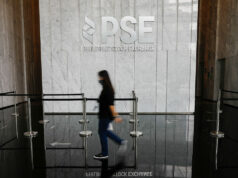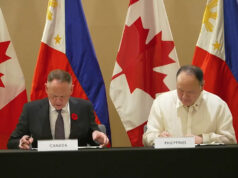Banks improve asset quality, but profitability slips
By Marissa Mae M. Ramos
THE COUNTRY’s biggest banks saw their quality of assets improve in the third quarter even as their profitability and their capacity to absorb risky assets slipped.
BusinessWorld’s 3rd Quarter Banking Report showed the combined assets of the 43 universal and commercial banks (UK/Bs) operating in the country grew by 9.87% to P15.75 trillion in the July-September period from the P14.33 trillion in 2017’s comparable three months.
Asset growth in the third quarter was slightly faster than the 9.85% notched in the second quarter, but slower than last year’s 14.1%.
Bank loans, which comprised around half of big banks’ assets, totaled P8.7 trillion, 16.6% more than the P7.5 trillion in 2017’s third quarter.
In terms of profitability, UK/Bs’ 4.82% median return-on-equity (RoE) was less than the 6.38% in the second quarter albeit more than the 4.73% of 2017’s third quarter. RoE — the ratio of net profit to average capital — measures the amount that shareholders make on every peso invested in a company.
BDO Unibank, Inc. (BDO) remained at the top in terms of assets and loans, followed by Metropolitan Bank & Trust Co. (Metrobank) and the Bank of the Philippine Islands (BPI).
Among banks with assets of at least P100 billion, Land Bank of the Philippines (LANDBANK) topped in terms of growth, increasing 20.3% year-on-year. It was followed by Robinsons Bank Corp.’s 19.8% and China Banking Corp.’s 18.2% increases.
The same three months saw Bank of Commerce as the most aggressive lender, with a year-on-year growth of 40.3%, followed by those of LANDBANK (39%) and Robinsons Bank Corp. (33.2%).
In terms of deposits, BDO was still on top at P2.345 billion while LANDBANK came in second at P1.58 trillion, ahead of BPI’s P1.544 trillion and Metrobank’s P1.543 trillion.
ASSET QUALITY
The non-performing loans (NPL) ratio of big banks improved to 1.40% in the third quarter from 1.5% in the preceding three months.
Meanwhile, their nonperforming assets ratio — the combination of nonperforming loans, foreclosed properties and total assets — steadied at 0.66% in the third quarter.
As percent of total assets, foreclosed real and other properties dropped to 0.33% from 0.34%.
The banks’ coverage ratio — which is the ratio of the total loan loss reserves to gross NPL — was 152.27% during the quarter. This was higher than the preceding quarter’s 143.60% and more than enough to cover the entire value of bad loans held by big banks, with loan loss reserves totaling some P171.703 billion.
On the other hand, their median capital adequacy ratio also went down to 16.85% versus the 17.29% in the previous three-month period.
Still, the ratio remains above the Bangko Sentral ng Pilipinas’ safety net prescribed at a minimum of 10% and the international standard of eight percent.
BusinessWorld Research has been tracking the financial performance of the country’s U/KBs on a quarterly basis since the late 1980s using banks’ published statements of condition.



